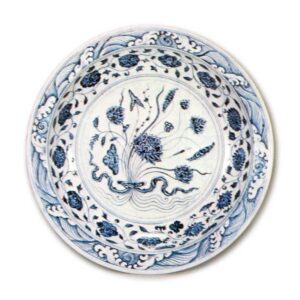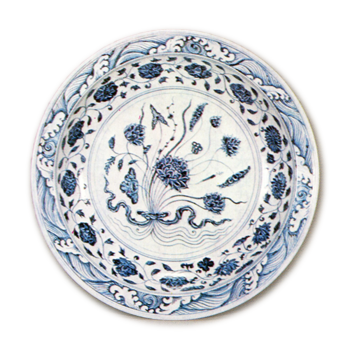
Porcelain fired in Jingdezhen during the Yongle period (1403-24) at the beginning of the Ming Dynasty in China. The main types of porcelain were blue-and-white and glazed-bronze, which were completed at the end of the Yuan dynasty (1368-1644). The clay is fine and solid, and generally slightly thicker than other types. The backs of dishes and vessels often show reddish burn marks. Many of the dishes and vessels are relatively large. While the designs on late Yuan porcelain are Arabic in style, Yongle porcelain has a more spacious design with many blank spaces, and the flow of the design is elegant and refined. Although there are fewer examples of underglaze red porcelain than underglaze blue-and-white porcelain, they are almost identical in character. It is said that the Yongle kiln had already produced reddish-brown porcelain, and there are some examples such as a pressed cup with a fish design, but there are many who doubt whether it was made by the Yongle kiln or not. There are some famous Yongle kiln wares with seal inscriptions “Made in the Year of Yongle” carved with hair, but there are few examples of wares made in the same year as believed, so it is reasonable to assume that the custom of adding annual inscriptions was not yet established in the Yongle period.



